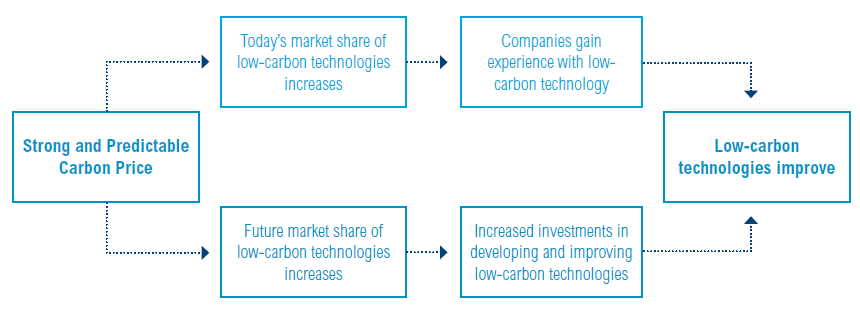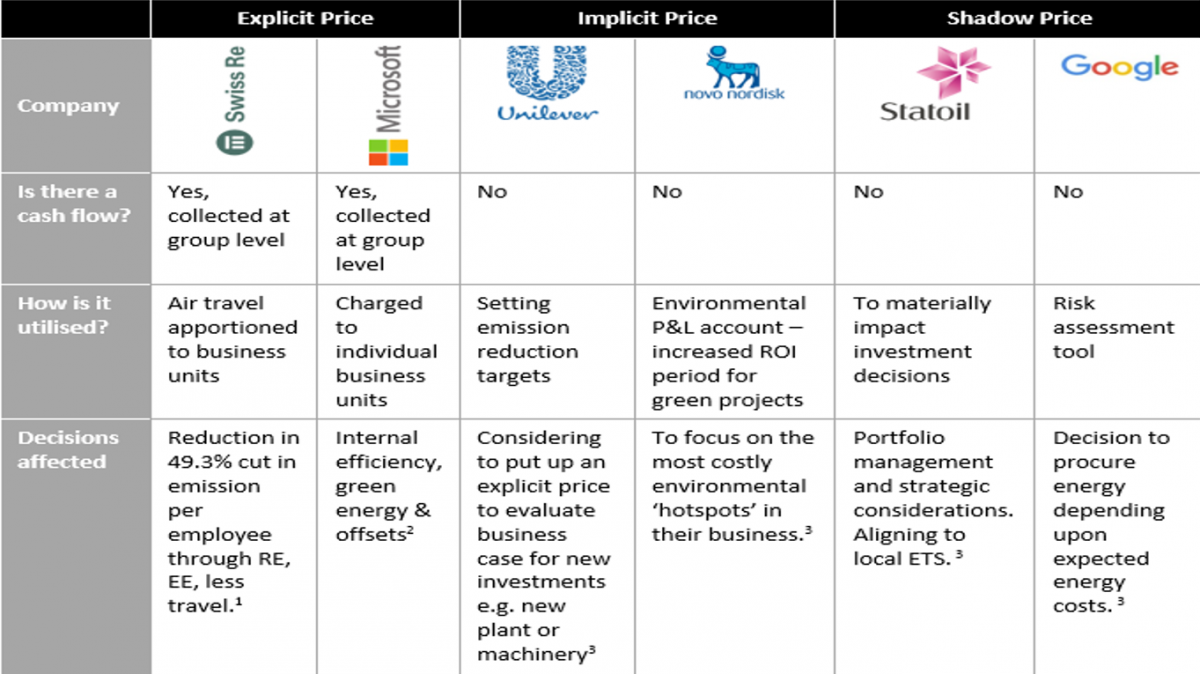Corporates, Cost of Carbon and Internalising Externalities
by -
In recent times, discussions around internal carbon pricing have been intensifying. Carbon pricing shifts costs away from society to the polluter, and provides incentives to reduce emissions. More than 430 companies globally have implemented internal carbon pricing – evidence that corporates are recognising that this benefits more than just climate.
While most policies follow the ‘polluters pay’ principle, the impairment costs of greenhouse gas emissions are still underestimated. There are two critical parts to the carbon pricing discussions. Firstly, evaluating social and economic externalities such as potential environmental damage due to greenhouse gas (GHG) emissions; and secondly, identifying instruments that encourage corporates to set internal carbon pricing into their businesses.
Adopting Internal Carbon Pricing
Companies adopt either shadow, explicit or implicit carbon pricing. These prices can vary depending on context, purpose, the exposure of the business to climate risk, and long-term corporate decision-making. Internal carbon pricing acts as a screening tool that offers multiple opportunities:
When used as a shadow price in investment decisions, it offers better understanding of potential impacts of externalities on project profitability.
When used as taxes, fees or as part of trading mechanisms to create a cash flow, it can be used for buying credits as partial fulfilment towards achieving carbon neutrality.
When used as implicit price, it offers an insight into GHG emission reduction targets and how much capital is required for achieving the target.
Broadly, businesses adopt the following two approaches for internal carbon pricing – risk assessment and management, or abatement or mitigation targets. This varies according to the intended use, and is either integrated or informational.
It is key for companies to start simple. They need to answer preliminary questions to help guide the process, like, the purpose of internal carbon pricing; important organisational factors to consider; how will internal carbon pricing be used in their business; and the kind of advice or support, internal or external, that will be needed.
An Evolving Tool
Internal carbon pricing will effectively reduce emissions without requiring accurate predictions on future energy-efficient technologies. Putting an incremental charge on carbon-intensive fuels and goods induces innovation in clean energy technologies by encouraging businesses to look for alternatives that meet their needs in the most cost-effective way.
An issue brief by WRI titled “Putting a Price on Carbon: Reducing Emissions” explains how a price on carbon can lead to technological change by applying it to electricity sector.

This approach provides a major advantage because breakthroughs could emerge from anywhere – for example renewables, storage of energy, carbon capture or technologies yet unknown. This presents a unique opportunity to any organisation for applying the price on carbon either at an organisational level or at an activity level.
Mobilising Internal Carbon Pricing
This matrix looks at operationalising internal carbon pricing by integrating it into the corporate decision making process.

Internal carbon pricing not only fosters financial benefits but also helps mitigate emissions. In the first case, the methodology for a shadow carbon cost in investment aims to provide better understanding of the exposure to climate risks. While the actual fund creation or internal trading mechanisms directly drive emission reduction through mitigation.

For businesses to implement a fair carbon pricing policy, they will need to consider affected groups and how their views are represented in organisational decisions. Carbon pricing is meant to change the competitive position of entities by increasing financial costs associated with carbon-intensive activities. Fair carbon pricing levels the playing field between carbon-intensive and low-carbon activities, resulting in net positive impacts for the climate, and provides long-term financial incentives to businesses.


